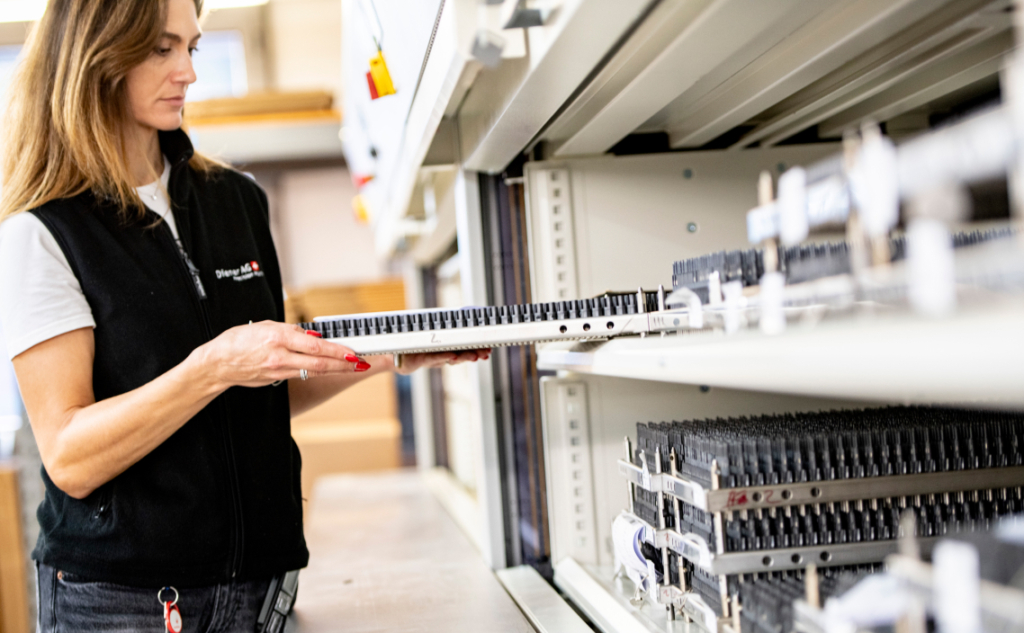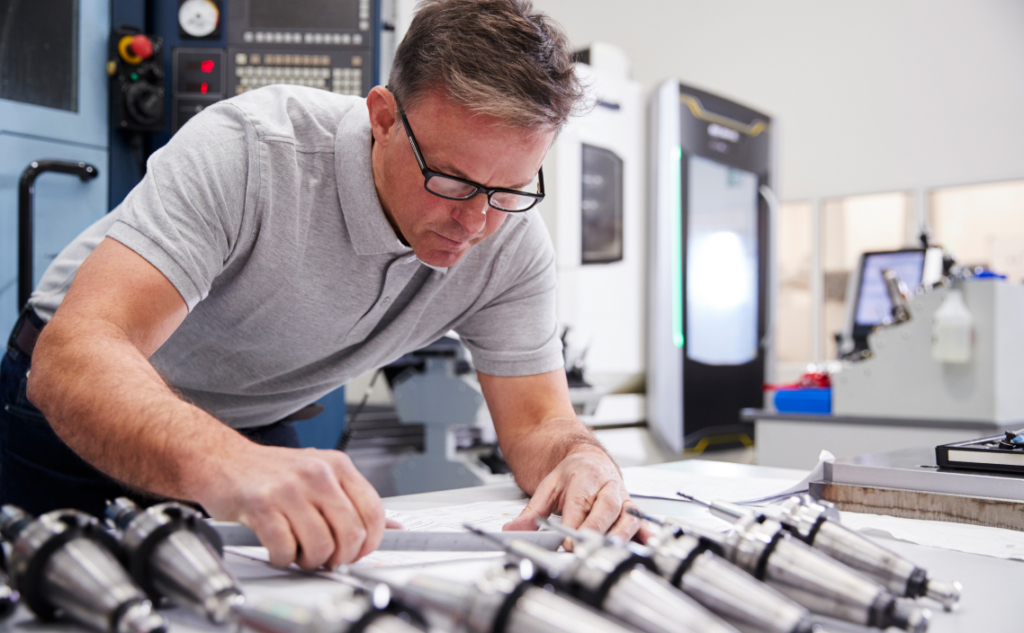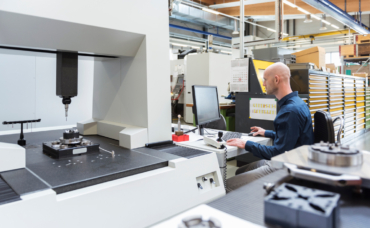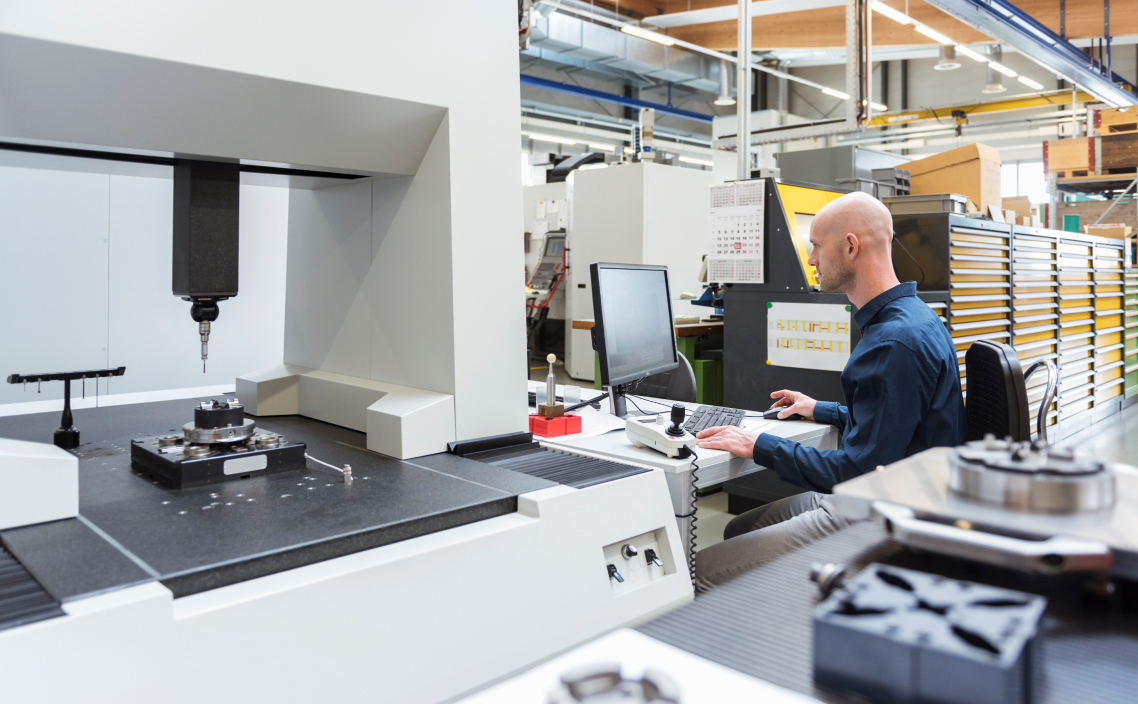In the MedTech industry, slow manufacturing lead times can hinder innovation and delay the delivery of life-saving solutions. When launching an advanced medical device, every day matters.
This article examines the main challenges that affect lead times in medical device manufacturing and outlines proven strategies to mitigate them, highlighting how partnering with a one-stop-shop supplier like Acrotec Medtech can be a game-changer.
Understanding the Medical Device Supply Chain
The medical device supply chain encompasses all processes and operations necessary for medical devices to progress from prototyping to manufacturing and ultimately to their final use in healthcare settings.
Managing the medical device supply chain involves operational excellence, continuous monitoring, risk assessment, and rapid reactivity without compromising safety and standards.
It must meet critical requirements:
- Ensuring quality and high-precision at every level,
- Operating under strict regulations from the FDA, EU MDR, and ISO standards, with end-to-end traceability,
- Ensuring product consistency, maintaining sterile conditions, and validating suppliers,
- Meeting exact specifications, with no room for minor variances,
- Delivering on time,
- Navigating international logistics, customs regulations, and risk factors related to geopolitical disruptions and pandemics.
The medical device supply chain is complex. It needs precision at every step of the process. It also requires product integrity and compliance with health and safety rules.
Any delay or disruption in the process can have a direct impact on patient outcomes and the delivery of healthcare.
Challenges Impacting Lead Times in the Medical Device Supply Chain
Several factors contribute to prolonged lead times:
Limited Warehouse Capacity
Medical devices and components often require specialized storage conditions, which limit flexibility.
Today’s growing demand for medical devices has led to expanding product ranges. This can also constrain warehouse infrastructure, leading to inefficiencies.
Process Flows
Process flows encompass multiple stages, ranging from sourcing raw materials to delivering finished products.
Ensuring a smooth process flow is critical, but it is challenged by disruptions related to:
- Fragmented systems,
- Inconsistent procedures,
- Facility layout constraints.
All this is happening in a context of strict regulatory compliance and traceability, which adds further complexity to the process.
Supply Chain Disruptions
Various supply chain disruptions occur in medical device manufacturing, generated by increased energy prices, geopolitical tensions, and rising component prices.
Supplier Management
Supplier reliability can have a direct impact on the supply chain efficiency. Issues related to supplier management, for example, can affect lead times.
Regulatory Compliance
Various health regulations, such as the MDR (Medical Device Regulation) in Europe, have imposed strict requirements on manufacturers, such as enhanced clinical evaluations and technical documentation.
While they facilitate better patient safety, they also create bottlenecks because of the limited number of notified bodies, thereby increasing lead times.

Best Practices for Reducing Lead Times in Medical Device Manufacturing
The Medtech industry is driven by OEMs striving to deliver innovations efficiently and maintain their competitive advantage. Time-to-market has become a key performance indicator, and all efforts are made towards reducing lead times.
To address these challenges, implementing best practices in the supply chain is essential. Below are some of the most effective strategies to optimize performance.
Embracing Digital Transformation
Utilizing digital tools such as AI, blockchain, and IoT enables companies to achieve real-time tracking. This helps them:
- Monitor inventory levels better,
- Predict demand more accurately,
- Track shipments.
According to the Deloitte survey findings “Has medtech entered the era of digital innovation?”, companies are also using IoT, predictive analytics, and AI to proactively service equipment in need of repair. This activity facilitates close coordination and seamless information flow among the customer, sales support, and supply chain teams.
Adopting Design-For-Manufacturing Feedback
Design-for-Manufacturing feedback offers the opportunity to identify manufacturability issues before the production phase.
One of the biggest hidden causes of long lead times is design issues, which lead to rework or production problems. Optimizing the design of a component for easier manufacturing can significantly speed up the entire process.
Implementing Lean Manufacturing Practices
Lean manufacturing practices focus on streamlining processes and reducing waste. Best practices include:
- Identifying and suppressing non-value-added activities in the production process,
- Standardizing work processes when possible,
- Applying just-in-time production to reduce inventory and lead times,
- Training employees on lean principles.
As explained in the Med Device Online article by Darren Dolcemascolo, “by creating a problem-solving mentality within an organization and developing strategies for improving product quality, an organization can produce high-quality products without the cost of added inspection.”
Sourcing in the Right Region
Evaluating where regional bottlenecks occur can reduce lead times. Sourcing can be local or offshore, and both strategies have their respective benefits and costs.
The choice requires finding the right balance between:
- Reducing transit time,
- Ensuring cost efficiency,
- Minimizing manufacturing time,
- Maintaining the utmost quality and reliability.
Developing Strategic Partnerships with Vetted Supplier Networks
Selecting a network of pre-qualified suppliers and building long-lasting relationships —based on collaborative planning, transparent communication, and performance metrics, offers consistent quality.
This has numerous benefits on supply chain management:
- Risk associated with trial-and-error in trying numerous non-vetted suppliers is eliminated,
- Exposure to disruption is reduced,
- Responsiveness is improved,
- Manufacturing lead times are optimized.
Merging Multiple Processes with a One-Stop Partner
Medical devices can require various manufacturing processes. A project, for example, may require CNC-machined parts, 3D-printed fixtures, and laser-produced components.
Selecting different specialized suppliers will require appointing a project manager to facilitate all operations. Trusting one partner with the entire project makes the process easier and more rapid. Delays associated with coordinating between multiple suppliers are therefore eliminated.
Regulatory Readiness
Early integration of regulatory requirements into the design and manufacturing prevents later inconsistency and avoids increased lead times.
Staying ahead of regulations, maintaining quality management systems, and recruiting regulatory staff are key to optimizing the supply chain.
Gaining Deeper Visibility into Inventory Positions
According to Plante Moran, leading OEMs implement advanced inventory strategies to enhance supply chain resilience and reduce lead times. Strategies include:
- A cross-functional Sales, Inventory & Operations Planning (SIOP) process helps align demand forecasts with production and inventory levels,
- Regularly reviewed MRP settings ensure accurate safety stock, reorder points, and lead time planning,
- Gaining visibility into consignment and loaner inventory enables more precise tracking of usage and replenishment.
Optimizing the Distribution Footprint
As highlighted by Plante Moran, top-performing OEMs assess delivery performance and growth trends to model ideal warehouse locations and inventory allocation.
By mapping the whole inbound and outbound logistics landscape, they can:
- Reduce excess handling,
- Minimize delivery times,
- Cut overall logistics costs—all while maintaining high customer service levels.

Acrotec Medtech: a One-Stop-Shop CMO
Reducing lead times in medical device manufacturing is crucial for accelerating innovation and delivering life-changing solutions to patients more quickly. To achieve this goal, OEMs must rely on contract manufacturing partners that are reliable, scalable, and highly precise.
Acrotec Medtech addresses these requirements accurately with its one-stop shop solution that spans the entire product lifecycle.
We support numerous medical applications, ranging from implants and surgical instruments to components for robotic-assisted systems, laboratory diagnostics, and life sciences platforms.
Our end-to-end capabilities include:
- Design and development,
- Prototyping,
- Component sourcing,
- Manufacturing,
- Sub-assembly,
- Cleaning,
- Packaging,
- Finished goods delivery and sterilisation.
We combine deep industry know-how with uncompromising quality, full traceability, and strict adherence to international regulatory standards—including ISO 13485 certification.
At Acrotec Medtech, we integrate the skills and knowledge of our member companies. Each company focuses on different areas of precision machining. This allows us to provide complete solutions from one supplier, reducing lead times and maintaining high precision.
Our advanced manufacturing capabilities include:
- CNC turning and milling,
- Micro-machining,
- Electrical Discharge Machining (EDM),
- Laser marking and processing,
- MIM/CIM,
- Surface treatment,
- Assembly,
- Sandblasting and bead blasting.
Mastering advanced manufacturing techniques is a key consideration when evaluating your CMO capabilities. Learn more about key considerations for selecting the right CMO in this Acrotech Medtech’s article.
Our teams work closely with customers to streamline production, minimize delays, and enable rapid scalability from prototype to full-scale manufacturing.
We achieve this through the centralization of critical steps in the process and seamless coordination across the group. Acrotec Medtech helps OEMs eliminate supply chain bottlenecks and shorten time-to-market.

Conclusion
For OEMs in the medical device industry, a strong and efficient supply chain is essential. It is a key part of providing life-saving technology to patients. Managing lead times, ensuring quality, and staying compliant all require proactive coordination across the entire value chain.
One of the most strategic moves an OEM can make is to build strong, long-term relationships with CMOs. When a CMO offers a true one-stop-shop model—with a global network of specialized facilities—they help OEMs simplify operations, reduce logistical complexity, and gain real leverage over lead times.
At Acrotec Medtech, we understand the pressure OEMs face to deliver on time, every time. Our integrated capabilities, global footprint, and deep expertise enable us to partner closely with you. We help you streamline your supply chain while maintaining the highest standards of quality and compliance.
Let’s explore how we can help optimize your supply chain—from concept to commercialization.
Contact us today to start the conversation.



